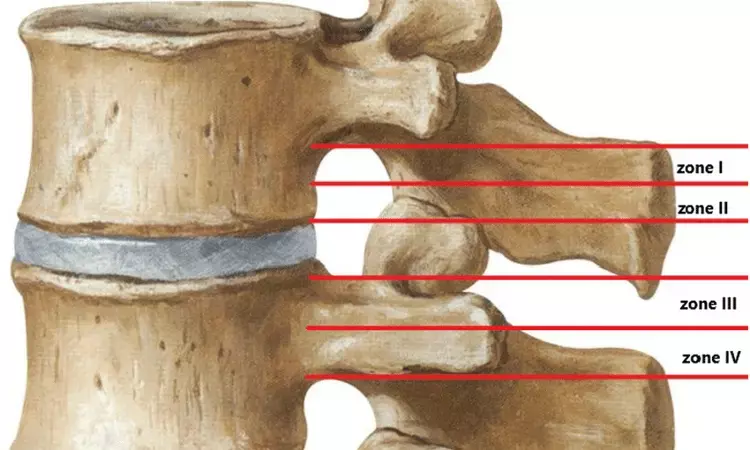- Home
- Medical news & Guidelines
- Anesthesiology
- Cardiology and CTVS
- Critical Care
- Dentistry
- Dermatology
- Diabetes and Endocrinology
- ENT
- Gastroenterology
- Medicine
- Nephrology
- Neurology
- Obstretics-Gynaecology
- Oncology
- Ophthalmology
- Orthopaedics
- Pediatrics-Neonatology
- Psychiatry
- Pulmonology
- Radiology
- Surgery
- Urology
- Laboratory Medicine
- Diet
- Nursing
- Paramedical
- Physiotherapy
- Health news
- Fact Check
- Bone Health Fact Check
- Brain Health Fact Check
- Cancer Related Fact Check
- Child Care Fact Check
- Dental and oral health fact check
- Diabetes and metabolic health fact check
- Diet and Nutrition Fact Check
- Eye and ENT Care Fact Check
- Fitness fact check
- Gut health fact check
- Heart health fact check
- Kidney health fact check
- Medical education fact check
- Men's health fact check
- Respiratory fact check
- Skin and hair care fact check
- Vaccine and Immunization fact check
- Women's health fact check
- AYUSH
- State News
- Andaman and Nicobar Islands
- Andhra Pradesh
- Arunachal Pradesh
- Assam
- Bihar
- Chandigarh
- Chattisgarh
- Dadra and Nagar Haveli
- Daman and Diu
- Delhi
- Goa
- Gujarat
- Haryana
- Himachal Pradesh
- Jammu & Kashmir
- Jharkhand
- Karnataka
- Kerala
- Ladakh
- Lakshadweep
- Madhya Pradesh
- Maharashtra
- Manipur
- Meghalaya
- Mizoram
- Nagaland
- Odisha
- Puducherry
- Punjab
- Rajasthan
- Sikkim
- Tamil Nadu
- Telangana
- Tripura
- Uttar Pradesh
- Uttrakhand
- West Bengal
- Medical Education
- Industry
Complication rates of 3 posterior decompression techniques for lumbar spinal stenosis almost same: JAMA

According to a new study, there was no differences in clinical outcomes or complication rates were found among the 3 minimally invasive posterior decompression techniques used to treat patients with lumbar spinal stenosis. Therefore surgeons can choose decompression techniques according to their skills and preferences to surgically treat Lumbar Spinal Stenosis.
The study was published in the JAMA Network Open.
Operations for lumbar spinal stenosis are the most often performed surgical procedure in the adult lumbar spine. This study reports the clinical outcome of the 3 most commonly used minimally invasive posterior decompression techniques.
A study was conducted to compare the effectiveness of 3 minimally invasive posterior decompression techniques for lumbar spinal stenosis.
This randomized clinical trial used a parallel-group design and included patients with symptomatic and radiologically verified lumbar spinal stenosis without degenerative spondylolisthesis. Patients were enrolled between February 2014 and October 2018 at the orthopaedic and neurosurgical departments of 16 Norwegian public hospitals. Statistical analysis was performed in the period from May to June 2021.
Patients were randomized to undergo 1 of the 3 minimally invasive posterior decompression techniques: unilateral laminotomy with crossover, bilateral laminotomy, and spinous process osteotomy.
Primary outcome was change in disability measured with Oswestry Disability Index (ODI; range 0-100), presented as mean change from baseline to 2-year follow-up and proportions of patients classified as success (>30% reduction in ODI). Secondary outcomes were mean change in quality of life, disease-specific symptom severity measured with Zurich Claudication Questionnaire (ZCQ), back pain and leg pain on a 10-point numeric rating score (NRS), patient perceived benefit of the surgical procedure, duration of the surgical procedure, blood loss, perioperative complications, number of reoperations, and length of hospital stay.
The results of the study are:
In total, 437 patients were included with a median (IQR) age of 68 (62-73) years and 230 men (53%). Of the included patients, 146 were randomized to unilateral laminotomy with crossover, 142 to bilateral laminotomy, and 149 to spinous process osteotomy. The unilateral laminotomy with crossover group had a mean change of −17.9 ODI points (95% CI, −20.8 to −14.9), the bilateral laminotomy group had a mean change of −19.7 ODI points (95% CI, −22.7 to −16.8), and the spinous process osteotomy group had a mean change of –19.9 ODI points (95% CI, −22.8 to –17.0). There were no significant differences in primary or secondary outcomes among the 3 surgical procedures, except a longer duration of the surgical procedure in the bilateral laminotomy group.
Thus, no differences in clinical outcomes or complication rates were found among the 3 minimally invasive posterior decompression techniques used to treat patients with lumbar spinal stenosis.
Reference:
Comparison of 3 Different Minimally Invasive Surgical Techniques for Lumbar Spinal Stenosis: A Randomized Clinical Trial by Erland Hermansen et al. published in the JAMA Network Open.
https://jamanetwork.com/journals/jamanetworkopen/fullarticle/2790425
Dr. Shravani Dali has completed her BDS from Pravara institute of medical sciences, loni. Following which she extensively worked in the healthcare sector for 2+ years. She has been actively involved in writing blogs in field of health and wellness. Currently she is pursuing her Masters of public health-health administration from Tata institute of social sciences. She can be contacted at editorial@medicaldialogues.in.
Dr Kamal Kant Kohli-MBBS, DTCD- a chest specialist with more than 30 years of practice and a flair for writing clinical articles, Dr Kamal Kant Kohli joined Medical Dialogues as a Chief Editor of Medical News. Besides writing articles, as an editor, he proofreads and verifies all the medical content published on Medical Dialogues including those coming from journals, studies,medical conferences,guidelines etc. Email: drkohli@medicaldialogues.in. Contact no. 011-43720751


